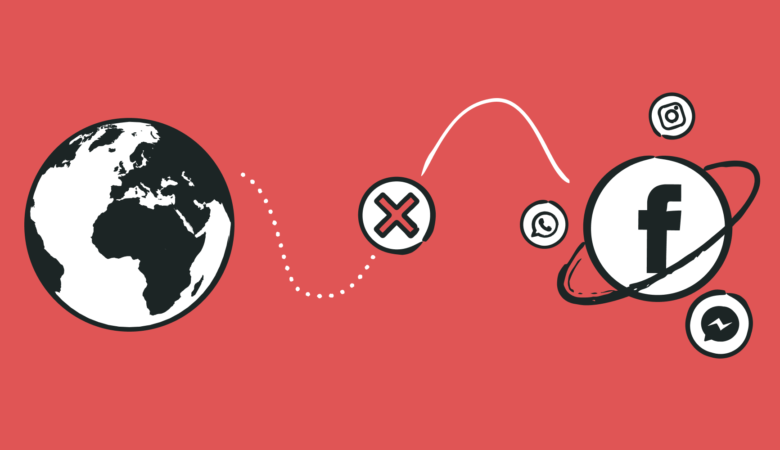It is generally accepted that website speed is of major importance for a successful website. Internet user’s patience levels are constantly decreasing and the majority of visitors will leave your website if it doesn’t load within 3 seconds. Despite its importance, digital marketers tend to focus more on aesthetics, content, social media, paid search and other online marketing aspects.
While focusing on these, they generally overlook the enormous potential and importance of improving their website performance.
Bounce rate studies / Slow pages lose Users
According to several studies, almost 50% of internet users expect a website to load within 2 seconds and are likely to abandon your website if it isn’t loaded within 3 seconds. Moreover, almost 80% of the internet users who had a bad experience with the performance of a website aren’t likely to return to that website. A delay of 1 second decreases customer satisfaction by about 16%. A number of studies have shown the correlation between website speed and traffic. For instance, in 2006 Google conducted an experiment where they increased the number of search results from 10 to 30. As a result, traffic and revenue dropped by 20% only because the page loaded half a second slower. Facebook, Google and Bing conducted similar studies andmutually concluded that slow pages lose users as well. As we can imagine, this has major consequences for large E-commerce websites in terms of conversion rates, sales and revenue. Now that we all agree that slow websites are catastrophic, what are the exact consequences?
The consequences of slow websites in terms of conversions and revenue
One major aspect that is significantly influenced by slow loading webpages is the effect on conversion rates. For instance, in 2009 Amazon demonstrated that every 100 milliseconds of latency which occurred on their website will result in a 1% loss in sales. Which means, every second of latency will cost Amazon approximately 10% of revenue! Another more recent study by Walmart, showed that every second of improvement in their website loading time would increase conversion by 2%. The following graph shows the shocking relationship between page loading time and conversion rate.
A similar pattern (following graph) was discovered during a study of Tagman which demonstrated even more dramatic results. Tagman found that every second of delay in page loading time can result in a 7% decrease of online sales. It is interesting to see the similarity between the patterns discovered by both Walmart and Tagman.
How website loading time influences your Search Engine traffic
It is not a new fact that Google takes page loading time into account in determining their organic rankings. In 2010 Google officially announced that site speed would be included as a new signal in their search ranking algorithm. This was recently confirmed by Matt Cutts @ SMX ‘Slow sites rank lower’. Google likes fast loading webpages since they improve user experience and reduce operating costs. Another advantage of a fast loading website is the possibility for a search engine to crawl a website more efficiently, which would be especially beneficial for large E-commerce websites with thousands of pages. Based on this information, it is evident that having a fast loading website could potentially improve your organic search engine rankings.
In addition to the organic search results, page loading time is also a factor in determining Google Adwords’ Quality Scores. Not addressing this fact could dramatically affect your conversion rates.
How to monitor your website performance from around the world
Now we know the consequences of having slow loading websites, how can we measure it and isolate what is causing the issue? Imagine you’re a large international E-commerce website with heavy traffic and a large revenue stream at stake, depending on a single website for a multitude of countries which your organization conducts business in. How are you able to monitor the performance of your website from several places around the world?
With Uptrends Website Performance Monitoring you will be perfectly able to monitor the performance and loading times of your website from checkpoints all around the world. You will be alerted if serious issues occur.
If you want to obtain an instant overview of the loading times for your website from Checkpoints all over the world, try Uptrends Free uptime – website performance tool
Another great option is using the Uptrends Full HTML Webpage test tool which will immediately show you the bottlenecks which are causing greater loading times for your website. Our tool will provide you with a list of website elements and their loading times. This will give you a perfect idea of which elements should be improved in order to improve your loading times.
So what to do about it?
So now we have the tools to measure the performance of our website around the world, but how are we going to capitalize on them? The Uptrends Full Page Check will provide you with detailed information concerning each element of your site which should be improved upon. Although it differs per website, in general, the following practices will help you improve your website’s performance.
Optimize your Content
Improving the speed of your website starts with optimizing the content of your website. There are a lot of things you can do.
Decrease your code size
Remove unnecessary whitespaces, comments and empty elements since they all increase your code size. There are a lot of tools available which can help you with this. The following tools will help you reduce your website’s script footprint: (This Here) can be used to minify your JavaScript, (this here) can be used to minify your CSS and (this here) can be used to minify your HTML.
Optimize your images
Reduce the size of your images as much as possible. Try to keep the images in small formats with using JPEG. Images can also include unnecessary comments and colors which also increases the image size.
Specify Image Dimensions
A Browser will only begin rendering a page when the images of that page are loaded. Specifying image dimensions will help to speed up the process and therefore improve the entire loading time of your website.
Minimize Redirects
As google says: “Minimizing HTTP redirects from one URL to another cuts out additional RTTs and wait time for users.”
Reduce the amount of DNS lookups
Reducing the amount of unique domain names from which resources are loaded will reduce the amount of DNS resolutions the browser has to make, and will therefore decrease round-trip delays. You can test your website
Reduce the amount of bad requests
Broken links which result in 404 errors are all unnecessary and wasteful requests. So it is very wise to continuously check your website for broken links. There are several tools which will help you with this likeGoogle webmaster tools, Xenu and Screaming Frog.
Server side
The server side also needs to be taken into consideration. There are numerous ways to improve upon on the server side, such as the following:
Hosting
Obviously it all starts with proper hosting and a great hosting provider. So choose your provider wisely or consider changing, if you’re not satisfied.
Browser Caching
Using browser caching is also a great way to decrease loading times. Instead of loading all the elements from the server every time a user visits your website, it can load elements like images from the browser’s cache.
Content Delivery Networks
Make use of a Content Delivery Network. Such a Network makes use of a collection of web servers distributed throughout the world to deliver the content of your website more efficiently. Based on the location of a visitor and the quickest response time, it will choose a server and deliver the content as fast as possible.
Gzip Compression
Gzip Compression is one of the most popular methods for compression your HTML and CSS files. It is believed to save you around 50- to 70% of the original file size. This means that it will take less time to load your pages in general, and also less bandwidth overall. Read more about Gzip Compression here.
Of course there are many more tips for improving your website speed, for more information check Google’s tip on improving website performance.
Conclusion
We have concluded that website loading times can have an enormous effect on the conversions and revenue of your website. Only 1 second of delay could potentially cost you 10% of revenue. On the other hand, an improvement of only one second could potentially increase your conversions with 2%. This makes it very important to monitor the performance of your website constantly and to actively optimize the performance of your website.
Start monitoring the performance of your website now to make sure your website performs optimally all over the world in order to increase your conversion rates and revenue.





Leave a Reply